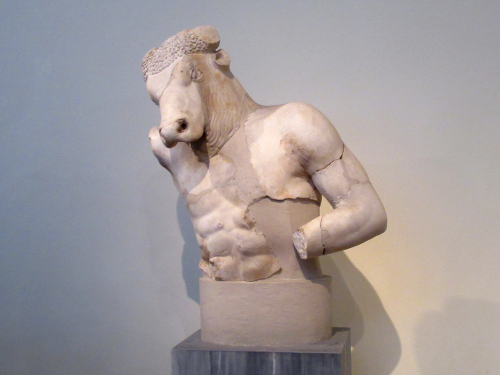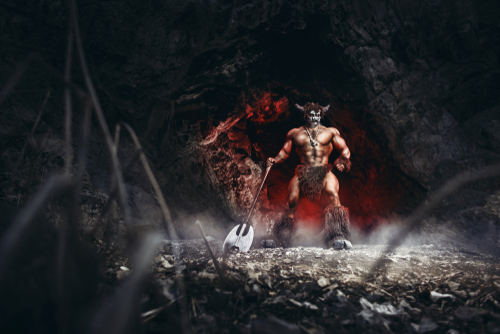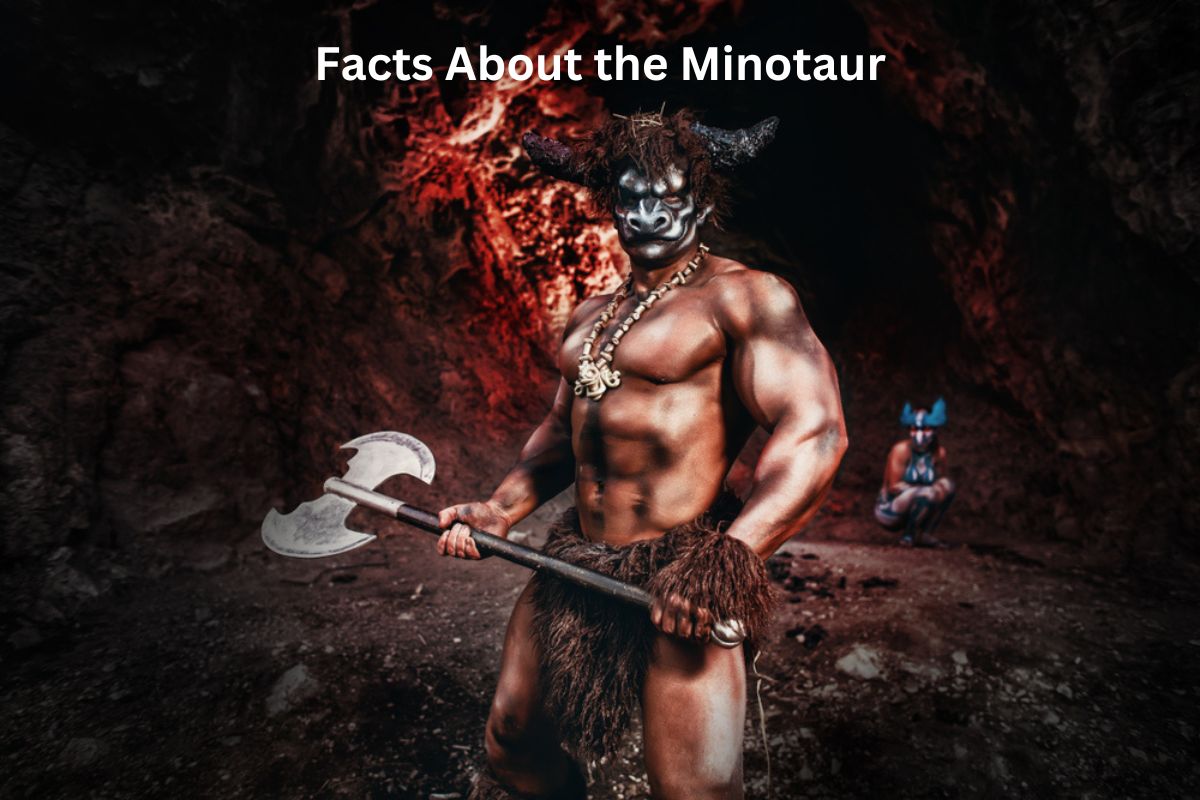The Minotaur is a captivating figure from Greek mythology—a half-human, half-bull creature that has left an indelible mark on ancient folklore.
Born from the union of Pasiphae and a bull, the Minotaur resided within the intricate Labyrinth, designed to confine and contain its fearsome power.
Known for its insatiable hunger for human flesh, the Minotaur was appeased with sacrificial offerings until the courageous hero Theseus confronted and defeated it. The myth of the Minotaur explores themes of power, sacrifice, and the consequences of human desires.
Through various artistic representations and its association with the Minoan civilization, the Minotaur continues to captivate the imagination and serve as a cautionary symbol of human folly.
Minotaur Facts
1. Half-human, half-bull creature from Greek mythology
The Minotaur is a legendary creature from Greek mythology. It is often portrayed as a fearsome and powerful being with the head of a bull and the body of a man.
Also Read: Facts About Gaia
This distinctive hybrid appearance makes the Minotaur a unique and captivating figure in mythology.

2. Born from the union of Pasiphae and a bull
According to the myth, the Minotaur was the offspring of Pasiphae, the wife of King Minos of Crete, and a bull. Pasiphae’s love for the bull was the result of a curse imposed by Poseidon, the god of the sea. The unnatural union between Pasiphae and the bull led to the birth of the Minotaur.
3. Resided in the Labyrinth, a maze-like structure in Crete
The Minotaur resided within the Labyrinth, an intricate and labyrinthine structure designed by the skilled craftsman and architect Daedalus.
Also Read: Facts About the Hydra
King Minos, the ruler of Crete, ordered the construction of the Labyrinth to contain and imprison the Minotaur.
The complex nature of the Labyrinth made it nearly impossible for anyone to find their way out once inside, adding to the challenge faced by those who entered.
4. Known for its ferociousness and hunger for human flesh
The Minotaur was infamous for its insatiable hunger for human flesh. It was fed with human sacrifices as a form of appeasement to prevent it from wreaking havoc in the kingdom.
Also Read: Pandora Facts
These sacrifices typically consisted of young Athenian men and women who were sent as tribute to King Minos. This grisly aspect of the Minotaur’s nature contributed to the terror associated with the creature.

5. Theseus, a hero from Athens, defeated the Minotaur
Theseus, a courageous hero from Athens, volunteered to be one of the sacrifices to the Minotaur. He embarked on a perilous journey to Crete and, with the help of Ariadne, King Minos’ daughter, Theseus obtained a ball of thread.
This thread acted as a guide for Theseus to navigate the winding passages of the Labyrinth. Armed with a sword, Theseus confronted and successfully defeated the Minotaur, liberating the Athenians from their terrifying fate.
6. The name “Minotaur” combines “Minos” and “taur” (meaning “bull”)
The name “Minotaur” is derived from two components. “Minos” refers to King Minos, who played a pivotal role in the creature’s origin and confinement. The second part, “taur,” is derived from the Latin word for “bull.”
The combination of these elements encapsulates the essence of the Minotaur’s unique identity as a half-man, half-bull creature. The name itself reflects the creature’s origin and underscores its connection to the mythological narrative.
7. Various artistic representations depict its appearance differently
The physical appearance of the Minotaur can vary in different artistic representations. In some depictions, it is shown with the body of a man and the head of a bull, emphasizing its human-like qualities.
In other interpretations, it is portrayed with the body of a bull and the head of a man, highlighting its beastly nature. These varied depictions allow artists to explore different aspects of the Minotaur’s character and convey its duality.
8. Inspired numerous works of art, literature, and film
The story of the Minotaur and the Labyrinth has been a rich source of inspiration for artists, writers, and filmmakers throughout history. Its captivating narrative and powerful symbolism have been depicted in numerous works of art, including sculptures, paintings, and mosaics.
Additionally, the myth has served as inspiration for various literary works, such as “The Minotaur” by Nathaniel Hawthorne and “The King Must Die” by Mary Renault.
The Minotaur’s story has also been adapted into films, with notable examples including “Minotaur” (2006) and “Percy Jackson & The Olympians: The Lightning Thief” (2010).
9. Serves as a cautionary tale about human hubris and desires
The myth of the Minotaur serves as a cautionary tale that explores themes of human hubris and the consequences of unchecked desires. It highlights the dangers of allowing power, pride, and unchecked passions to control one’s actions.
The Minotaur’s existence and the need for human sacrifices were direct results of King Minos’ pride and his defiance of the gods. This cautionary aspect of the myth serves as a reminder of the importance of humility and self-control.
10. Associated with the Minoan civilization on the island of Crete
The legend of the Minotaur is closely intertwined with the Minoan civilization, an ancient culture that flourished on the island of Crete. The myth reflects the significance of bulls in Minoan society, where the bull was considered a sacred animal and held symbolic importance.
Also Read: Facts About the Minoans
The tale also sheds light on the intricate relationship between humans and nature, particularly the primal forces embodied by the Minotaur. The story’s connection to the Minoan civilization adds depth and historical context to the myth, further enriching its cultural significance.
